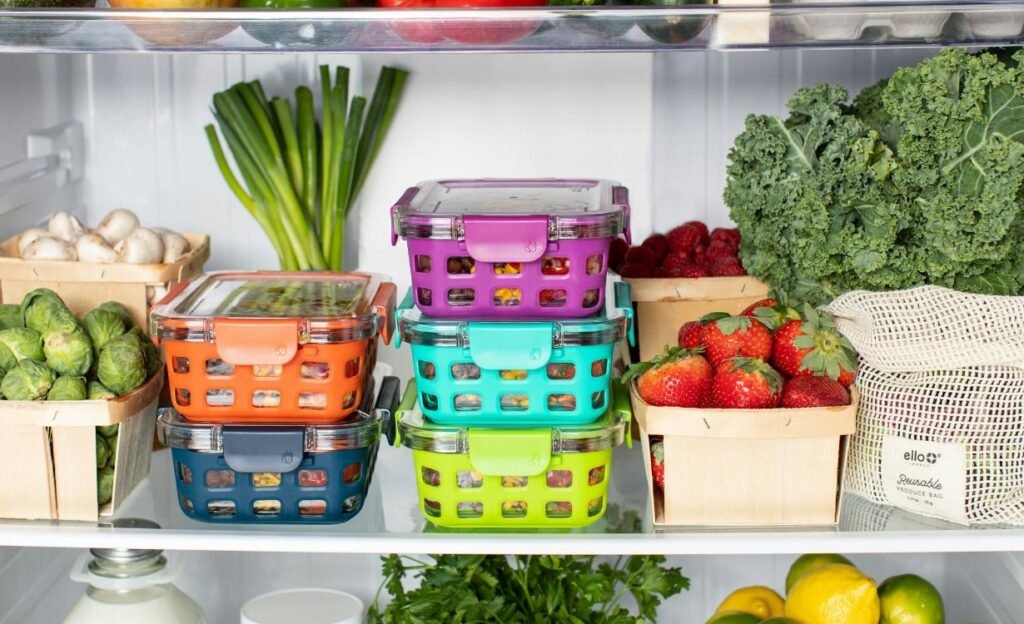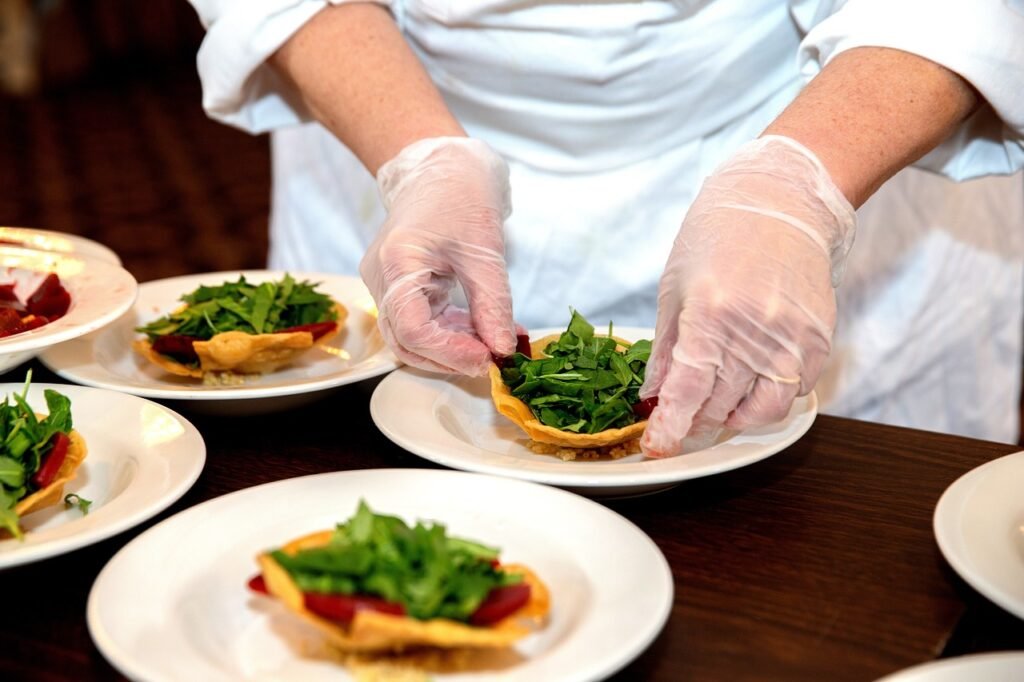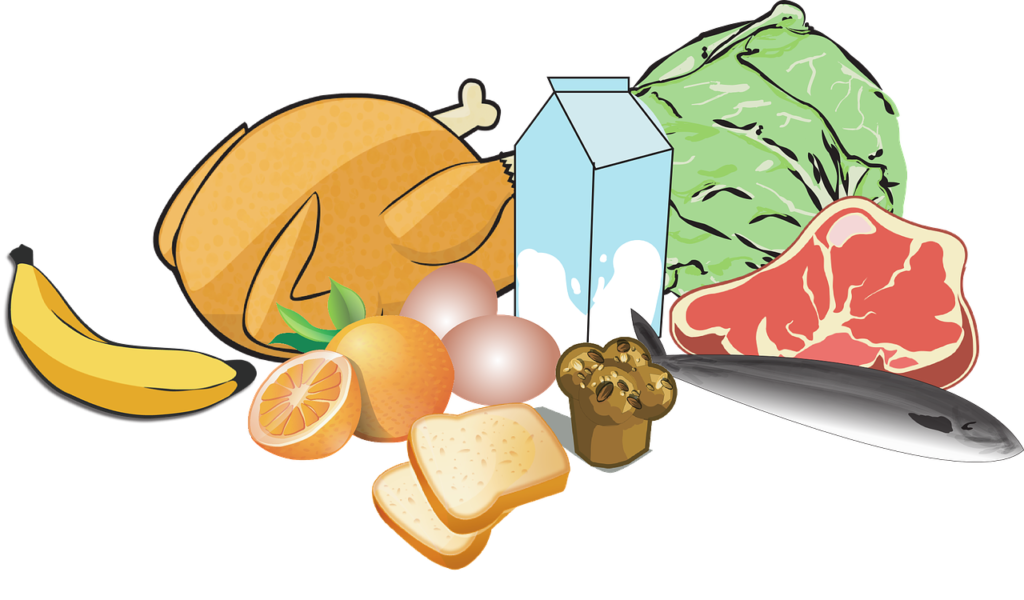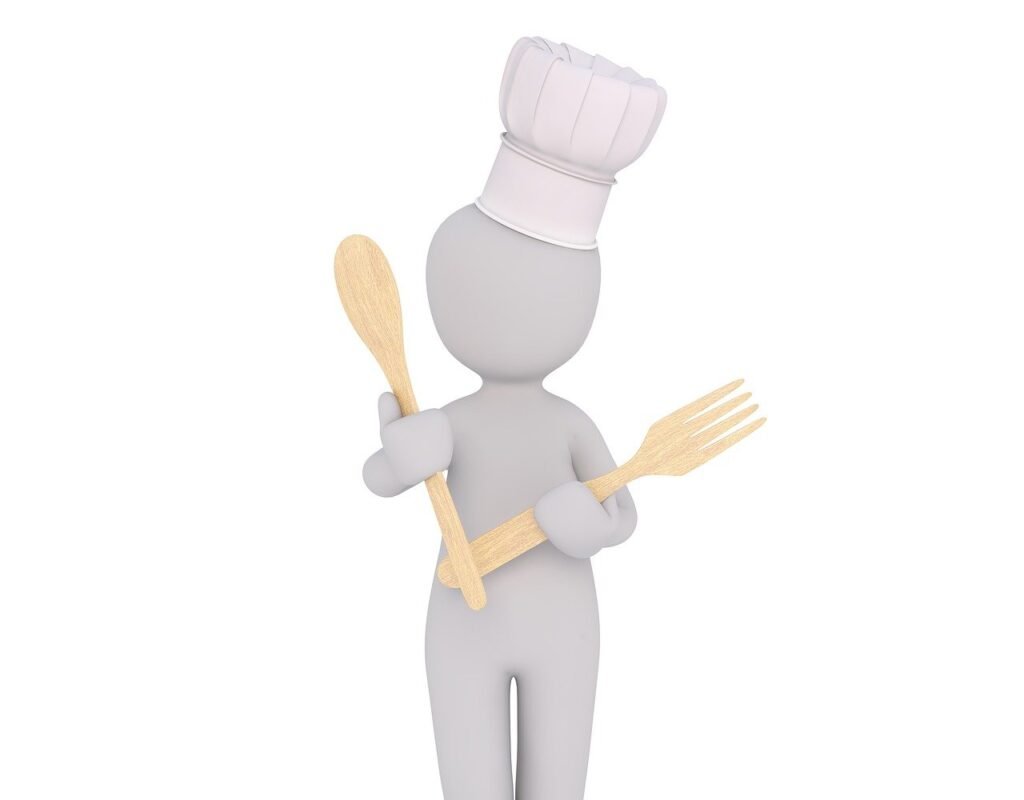Kitchen Safety and Sanitation is more important than you think.
Have you ever experienced the dread of food poisoning?
That uncomfortable feeling of nausea, vomiting, and diarrhea can ruin your day, or even worse, lead to serious health complications.
The good news is that many foodborne illnesses can be prevented by simply taking care of your kitchen safety and sanitation.
Why is it critical to take care of food safety?
The answer is simple: it protects your health and the health of your loved ones.
By following proper food safety practices, you can significantly reduce the risk of foodborne illnesses and enjoy delicious, safe meals.
In this post, we’ll explore five essential food safety tools that every home cook should have in their kitchen.
These tools are easy to obtain and can make a big difference in ensuring the safety of your food. Let’s dive in!
1: Meat Thermometer

A meat thermometer is an essential tool inside every kitchen.
Why is a meat thermometer so important?
Simply, for ensuring that your meat is cooked to the correct internal temperature.
One of the biggest risks of undercooked meat is the presence of the temperature danger zone (TDZ)
This is a temperature range between 40°F (4°C) and 140°F (60°C) where bacteria can multiply rapidly.
A meat thermometer can help you avoid the TDZ by allowing you to monitor the internal temperature of your meat.
This is crucial for preventing foodborne illnesses like salmonella and E. coli.
By using a meat thermometer, you can avoid the risk of undercooked or overcooked meat.
What is the recommended internal temperature for different types of meat?
The recommended internal temperature for different types of meat varies.
For example, beef should be cooked to a minimum internal temperature of 145°F (63°C).
Chicken should be cooked to a minimum internal temperature of 165°F (74°C).
Very soon, I will prepare an article where I’ll try to explain this in details.
But now, let’s move to another question…..
How do I use a meat thermometer correctly?
To use a meat thermometer correctly, insert it into the thickest part of the meat, avoiding bone.
Make sure the thermometer is not touching the pan or grill.
Cook the meat until it reaches the recommended internal temperature.
You can find a variety of thermometers in the market.
What are the different types of meat thermometers?
There are several types of meat thermometers available, including digital, probe, and instant-read thermometers.
Each type has its own advantages and disadvantages.
For example, digital thermometers are typically more accurate and easier to read, but they may be bulkier and take longer to read.
Probe thermometers are good for monitoring the internal temperature of large cuts of meat, but they can be more difficult to use and may not be as accurate.
Instant-read thermometers are the most convenient type of thermometer, as they provide a quick and accurate reading of the internal temperature.
However, they may not be as accurate for large cuts of meat.
Anyway, you can choose the type of meat thermometer that best suits your needs.
2: Cutting Boards

Why is it important to use separate cutting boards?
Using separate cutting boards for raw meat, poultry, and seafood, and for fruits and vegetables can help prevent cross-contamination.
This occurs when bacteria from raw foods are transferred to cooked foods.
Cross-contamination can lead to foodborne illnesses, so it’s essential to take precautions to avoid it.
What is a color-coded cutting board system?
A color-coded cutting board system is a simple and effective way to prevent cross-contamination.
By using different colored cutting boards for different food categories, you can easily identify which board should be used for each type of food.
For example, you could use a red cutting board for raw meat, a green cutting board for fruits and vegetables, and a yellow cutting board for poultry and seafood.
How can color-coded cutting boards prevent cross-contamination?
By using a color-coded cutting board system, you can visually distinguish between different food categories.
This makes it less likely that you will accidentally use the same cutting board for both raw and cooked foods.
Additionally, color-coded cutting boards can help you to remember which cutting board to use for each type of food, reducing the risk of human error.
How often should I replace my cutting boards?

Cutting boards should be replaced regularly, especially if they become damaged or scratched.
Damaged cutting boards can harbor bacteria and make it difficult to clean thoroughly.
If your cutting boards show signs of wear and tear, it’s time to replace them.
3: Food Storage Containers

Food storage is crucial in food processing, and we commit several mistakes while storing our foods.
For this reason, we prepared a separate post on some of these mistakes and how badly they can affect food safety.
Why is it important to store food properly?
Proper food storage is essential for preventing food spoilage and contamination.
By storing food correctly, you can help to maintain its freshness, flavor, and safety.
What are the best types of food storage containers?
There are several types of food storage containers available, including plastic, glass, and silicone.
Each type has its own advantages and disadvantages.
For example, plastic containers are lightweight and durable, but they may contain BPA, a chemical that has been linked to health concerns.
Glass containers are non-porous and do not contain BPA, but they can be heavy and breakable.
Silicone containers are flexible, durable, and non-toxic, but they may not be as airtight as plastic or glass containers.
How should I store leftovers
Leftovers should be stored in airtight containers within 2 hours of cooking.
Label and date containers to track leftovers. Store leftovers in the refrigerator or freezer.
How often should I clean my food storage containers?
Food storage containers should be cleaned regularly to prevent the growth of bacteria.
This is especially important for containers that are used for picnics or outdoor activities.
For more information on picnic safety, please refer to my previous post on safety tips for school picnics
This topic needs to be explained further, and this is what I’m going to do soon in a separate post.
4: Personal Protective Equipment (PPE)

Food processing is a complete process that poses everyone to hazards. For this reason, we should not neglect wearing the proper PPE inside the kitchen.
PPE stands for the Personal Protective Equipment that should be worn to prevent serious unwanted consequences.
What types of PPE should I wear in the kitchen?
There are several types of PPE that you may need to wear in the kitchen, including:
Gloves: Gloves can help to prevent the spread of bacteria from your hands to food.
They are especially important when handling raw meat, poultry, seafood, and eggs. to prevent cross-contamination.
Aprons: Aprons can protect your clothes from spills, stains, and splatters. They can also help to prevent burns from hot surfaces.
Hairnets: Hairnets can prevent hair from falling into food.
Masks: Masks can help to prevent the spread of airborne bacteria and viruses.
Safety glasses: Safety glasses can protect your eyes from splashes of hot liquids or sharp objects.
How can PPE help to prevent foodborne illnesses and cross-contamination?
By wearing PPE, you can help to prevent the spread of bacteria and viruses from your hands to food.
This can help to reduce the risk of foodborne illnesses.
Additionally, PPE can help to prevent cross-contamination between raw and cooked foods.
How should I care for my PPE?
PPE should be cleaned and sanitized regularly. Disposable PPE should be discarded after each use.
Reusable PPE should be washed in hot soapy water and dried thoroughly.
5: Dish Soap

Dish soap is essential for cleaning dishes, utensils, and surfaces to remove harmful bacteria.
Why is dish soap important for kitchen safety?
By using dish soap, you can help to prevent the spread of foodborne illnesses and cross-contamination.
What are the different types of dish soap?
There are several types of dish soap available, including antibacterial and degreasing dish soaps.
Antibacterial dish soaps contain ingredients that can kill bacteria.
Degreasing dish soaps are effective at removing grease and grime from dishes and utensils.
Is dish soap safe?
Dish soap is generally safe when used as directed.
However, it is important to note that dish soap is a chemical and can pose a hazard if misused.
For more information on chemical hazards in the kitchen, you can check this link to learn some tips to avoid chemical contamination.
How should I store dish soap?
Dish soap should be stored in a cool, dry place, out of the reach of children and pets.
Never store dish soap or other chemicals side by side with food materials.
This can lead to accidental contamination and poisoning.
Conclusion: Kitchen Safety and Sanitation tools
In this post, we have explored five essential food safety tools that every home cook should have in their kitchen.
These tools include meat thermometers, cutting boards, food storage containers, personal protective equipment (PPE), and dish soap.
By using these tools and following proper food safety practices, you can significantly reduce the risk of foodborne illnesses and protect your family’s health.
Remember, kitchen safety and sanitation are crucial for ensuring the safety of your food.
Key takeaways:
Meat thermometer: Ensures meat is cooked to the correct internal temperature.
Cutting boards: Prevents cross-contamination between raw and cooked foods.
Food storage containers: Helps to prevent food spoilage and contamination.
PPE: Protects against bacteria, viruses, and injuries.
Dish soap: Cleans dishes, utensils, and surfaces to remove harmful bacteria.
Remember that all the mentioned tools are not all we need to avoid poor food safety.
By incorporating these tools and practices into your daily kitchen routine, you can create a safer and healthier cooking environment for yourself and your loved ones.



